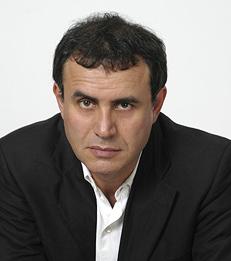Opinion
Trump May Kill the Global Recovery
—


Trump’s favored fiscal and trade policies will crowd out private investment, reduce foreign direct investment in the US, and produce larger external deficits.
By Nouriel Roubini
How does the current global economic outlook compare to that of a year ago? In 2017, the world economy was undergoing a synchronized expansion, with growth accelerating in both advanced economies and emerging markets. Moreover, despite stronger growth, inflation was tame – if not falling – even in economies like the United States, where goods and labor markets were tightening.
Stronger growth with inflation still below target allowed unconventional monetary policies either to remain in full force, as in the eurozone and Japan, or to be rolled back very gradually, as in the US. The combination of strong growth, low inflation, and easy money implied that market volatility was low. And with the yields on government bonds also very low, investors’ animal spirits were running high, boosting the price of many risky assets.
While US and global equities were delivering high returns, political and geopolitical risks were kept largely under control. Markets gave US President Donald Trump the benefit of the doubt during his first year in office; and investors celebrated his tax cuts and deregulatory policies. Many commentators even argued that the decade of the “new mediocre” and “secular stagnation” was giving way to a new “goldilocks” phase of steady, stronger growth.
Read the full Project Syndicate article.
___
Nouriel Roubini is a Professor of Economics and International Business and the Robert Stansky Research Faculty Fellow.
Stronger growth with inflation still below target allowed unconventional monetary policies either to remain in full force, as in the eurozone and Japan, or to be rolled back very gradually, as in the US. The combination of strong growth, low inflation, and easy money implied that market volatility was low. And with the yields on government bonds also very low, investors’ animal spirits were running high, boosting the price of many risky assets.
While US and global equities were delivering high returns, political and geopolitical risks were kept largely under control. Markets gave US President Donald Trump the benefit of the doubt during his first year in office; and investors celebrated his tax cuts and deregulatory policies. Many commentators even argued that the decade of the “new mediocre” and “secular stagnation” was giving way to a new “goldilocks” phase of steady, stronger growth.
Read the full Project Syndicate article.
___
Nouriel Roubini is a Professor of Economics and International Business and the Robert Stansky Research Faculty Fellow.
